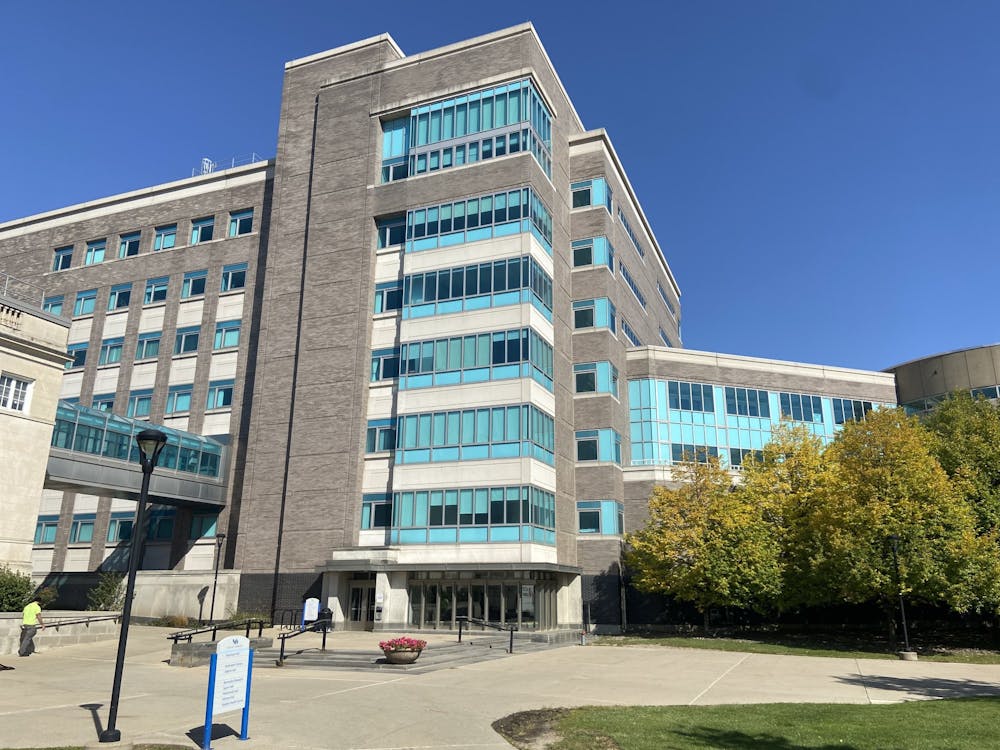It might be hard to imagine a world without root canals, but researchers at UB’s School of Dental Medicine have found a breakthrough. Instead of shaving down and replacing teeth, they are researching a way to regrow gums with dental lasers.
Tooth decay is the most common health condition humans face internationally, according to a 2019 report by the General Burden of Disease.
This fact has motivated Praveen Arany, assistant professor of Oral Biology, who has spent over 20 years doing research in the field of dental health, to now find ways to heal wounds and regenerate tissue by using lasers in dental medicine and beyond.
In his 15 structured courses that involve laser research, including PER 841: Intro to Lasers in Dentistry, and the informal observations he offers, Arany and his colleagues provide a platform for students to research ways to harness lasers to advance medicine and dentistry.
In his labs, students focus on ways to improve clinical outcomes for root canals, diabetes, the aging process, Seasonal Affective Disorder (SAD), wounds and whatever else students are curious enough to study.
Arany’s passion for this research came from learning that dental health plays a major role in overall health.
“They keep saying that the mouth is the mirror to your soul, right? To the rest of your body?” Arany said. “Dental disease has been shown to cause all kinds of other systemic problems. It makes your diabetes worse. There is some new literature showing that it can contribute to Alzheimer’s and you name it. I mean, there are so many examples of chronic human disease that have links to how good your oral hygiene is, and we’re realizing that now.”
When it comes to Arany and his colleagues’ research, there are two primary focuses: finding ways to use lasers to better current medical procedures and innovating new medical solutions to advance health like never seen before.
Using lasers to better current medical procedures
A winning smile can do a lot for many people’s self-confidence. But teeth crack and decay, which can lead to a root canal and replacement of natural teeth — an alternative to a root canal would allow patients to keep their real teeth.
Arany and his fellow researchers believe they’ve found a new solution.
Currently, doctors will remove the damaged or infected pulp and put in a filling to prevent a root canal. They will then wait three to six months with the hope that they can heal the tissue, according to Arany.
Arany and his colleagues instead would use a laser treatment and then do a smart filling. They envision the process taking two or three treatments within one to two weeks. They would then decide if their treatment has worked or if the patient needs a root canal.
Arany’s treatment is less expensive, especially when factoring in the costs of a crown, an eventual implant and the root canal itself.
“It’ll be a little bit more probably than your regular treatment, but you save all of that money, plus you have the advantage of keeping that normal tooth in its place, which you would not have with all the others,” Arany said.
The new procedure would work for doctors, too. Since the solution is faster, they would have the potential to see more patients.
The alternative is not fully tested yet. Arany said the research has been very successful in the animals tested, but his researchers still need to perform a human clinical trial, which they still need funding for.
Innovating new medical solutions to advance modern healthcare
Can light make people more resilient?
That is a primary concentration area in Arany and his colleague’s research.
And based on their research, the answer to that question is a resounding yes.
Arany and his colleagues have performed studies that have found that the right amount of light at the right time can better an individual’s health.
“Now we know that if you go too much in the sun and you get sun tan, especially if you have pale skin, it does cause sun damage,” Arany said. “But at the molecular level, the right amount of light can actually reverse that effect, [reversing the aging process], and that’s the most exciting part of that research.”
Their efforts and breakthroughs do not end there.
For example, a Brazilian student in one of the labs is trying to discover a cure for diabetes by using lasers on diabetic lesions.
Khrystyna Adam, a senior biological sciences major and pharmacology and toxicology minor, serves as a teaching assistant in some of the courses that Arany teaches.
“It’s just crazy to me how when I started off there was no knowledge of dental lasers and now in 2022, you see lasers everywhere, like in dental offices,” Adam says. “Over the COVID-19 [pandemic when] I was working as a dental assistant, my dentist bought a dental laser and she’s doing procedures. She only has positive things to say about dental lasers.”
“I recently started a study with Arany where [we are] using dental lasers to detect tooth decay.”
Issues that healthcare professionals have been failing to find a cure for decades and even centuries might be solved in the next couple of years if human clinical trials go well for Arany and his colleagues.
Not only are these faculty and students investigating and engineering the future of medicine, but they are finding their passions and serving their communities while doing so.
“UB Dental is known for giving back to the community,” Adams said. “Personally when I’m applying for dental schools, UB Dental is my top choice because they’re so known for their community outreach, they are always giving back to the Buffalo community.”
A.J. Franklin is an assistant features editor and can be reached at aj.franklin@ubspectrum.com





